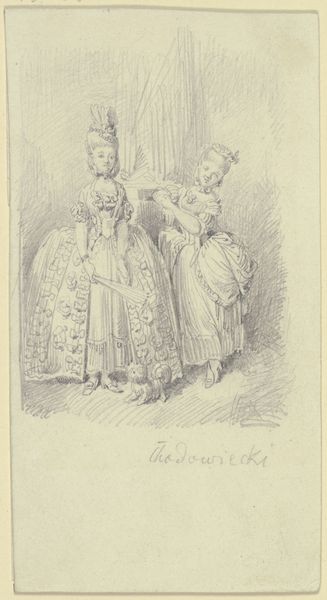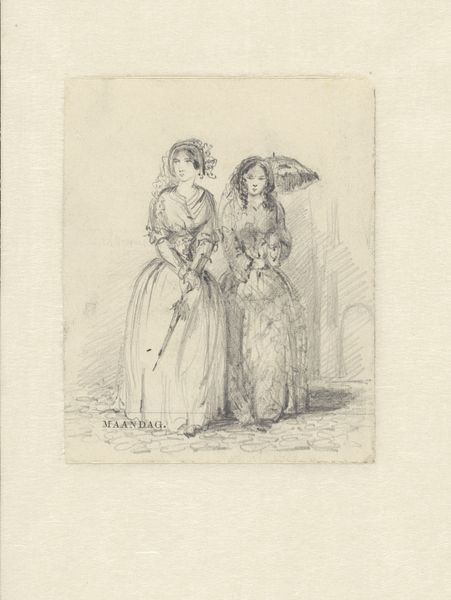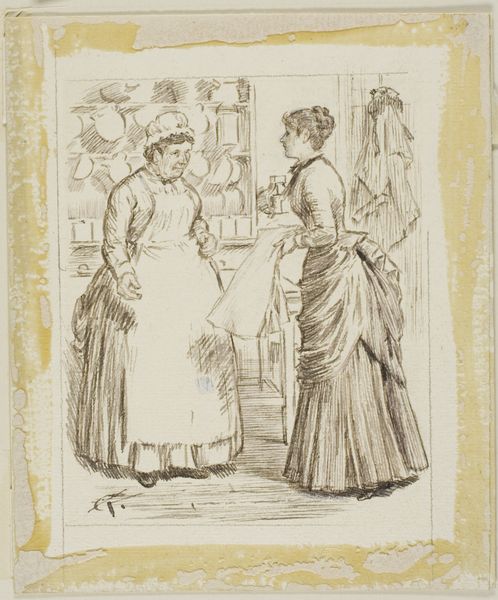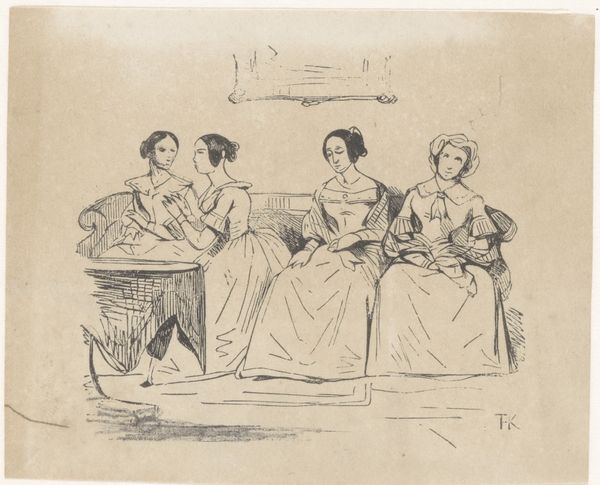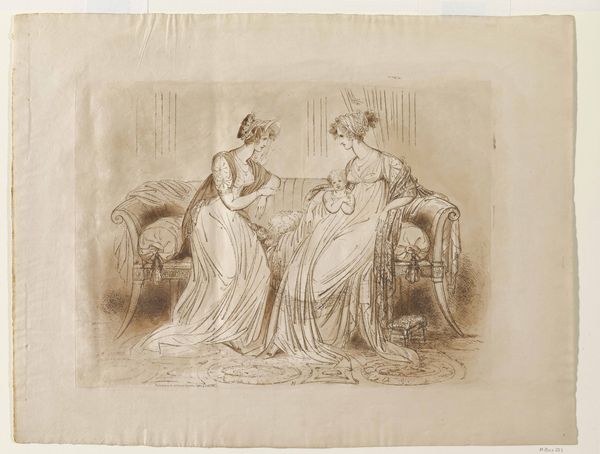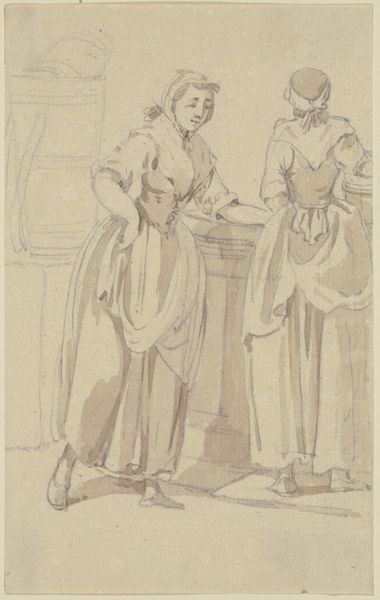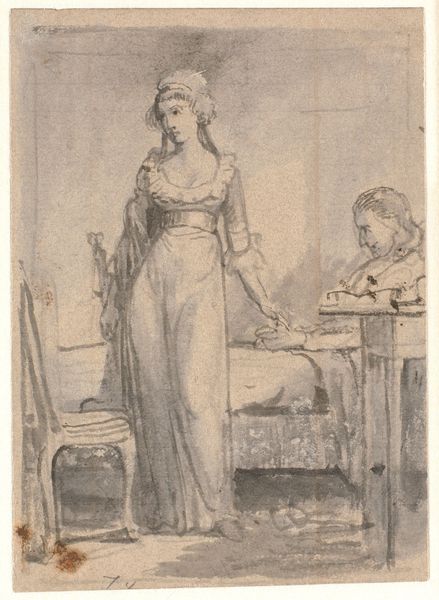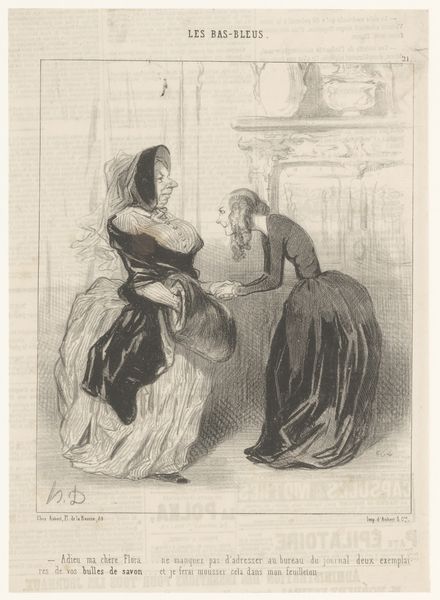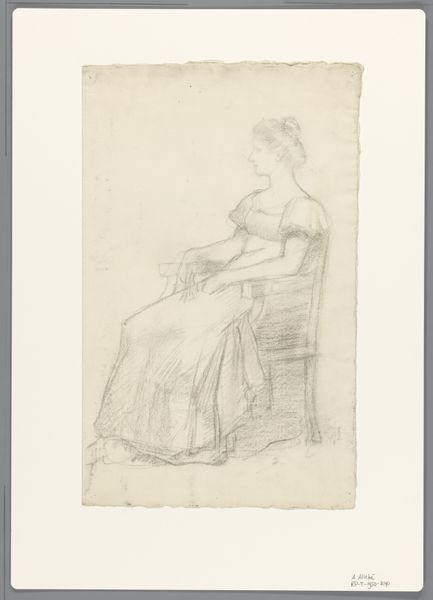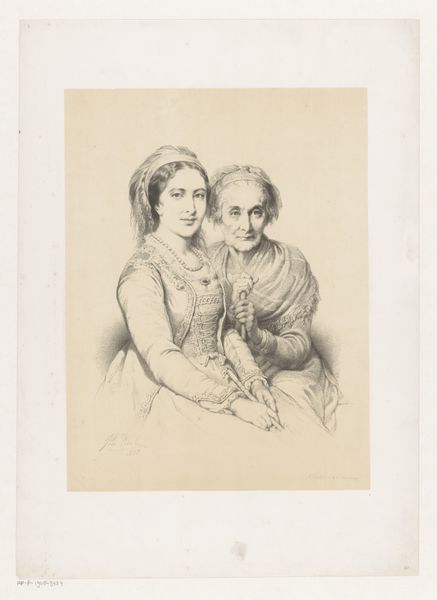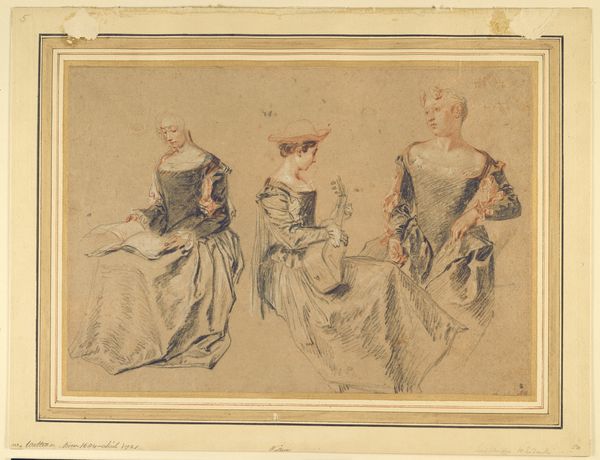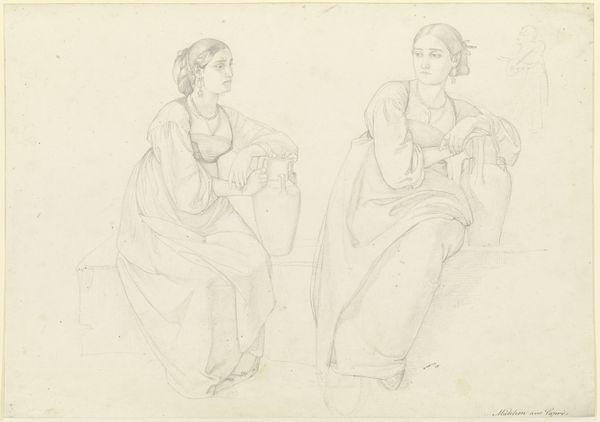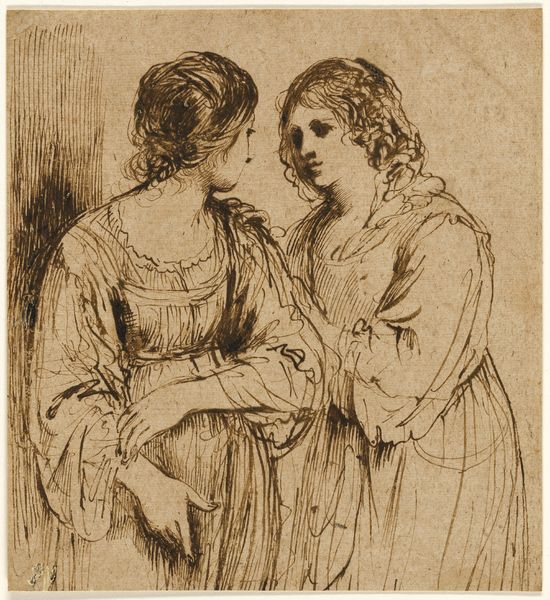
drawing, print, paper, pencil, chalk
#
portrait
#
drawing
# print
#
paper
#
pencil drawing
#
pencil
#
chalk
#
genre-painting
#
academic-art
#
realism
Dimensions: 408 × 308 mm
Copyright: Public Domain
Curator: Frank Stone's "Washing of Hands," rendered with pencil and chalk on paper, greets us today. What do you sense from it? Editor: An air of gentle melancholy, almost dreamlike in its haziness. The figures seem suspended in time, their soft forms barely registering a sound. Is it the quiet reverence for domestic ritual or perhaps a commentary on something deeper? Curator: It has a devotional feeling for sure. It feels deeply embedded in realism, yet avoids sharp, definitive lines. I'm curious about its genre-painting roots. Frank Stone often chose subjects from everyday life. Editor: Look closely, and the composition seems subtly structured around contrasts. The darker background sets off the women’s pale dresses and faces. Notice the careful interplay between the textures of the fabric and the smooth skin. Semiotics might argue this draws the eye to gesture, an emphasis on doing something properly, hygienically, even. Curator: I wonder if the act itself, "Washing of Hands," symbolizes purification—perhaps cleansing not only physical but also moral burdens? After all, visual conventions about handwashing were common throughout the history of European painting. Is it a symbol of absolution, or something more straightforward—a simple chore, made noble? Editor: Either is a reasonable deduction, as a formalist my bias would fall on structure, as the play of light suggests revelation through mundane activity, as opposed to mere physical duty. Look how the faint light on their faces creates these subtle highlights; they appear saintly almost. The muted palette furthers the devotional aesthetic. Curator: Seeing as the sketch captures an otherwise commonplace moment of female labor. This interpretation elevates the subject through artistic skill and attention, I agree. Do you think Stone meant to convey how art itself, like this ritual, holds the potential to transform the ordinary? Editor: An interesting reading, although I think the point may rather be about the potential of the observer of daily events. He presents it in an extremely well executed form and structure which is meant to direct our view. This may tell us about Victorian tastes, what an aesthetic appreciation might look like in social context. What would it mean to simply show and value that in itself? Curator: Absolutely. Considering our current social discourse about art is incredibly valid. His image offers not just a glimpse into domestic life but also an implicit argument for finding beauty and meaning in the simplest of human endeavors. A lovely drawing that gives us food for thought.
Comments
No comments
Be the first to comment and join the conversation on the ultimate creative platform.
